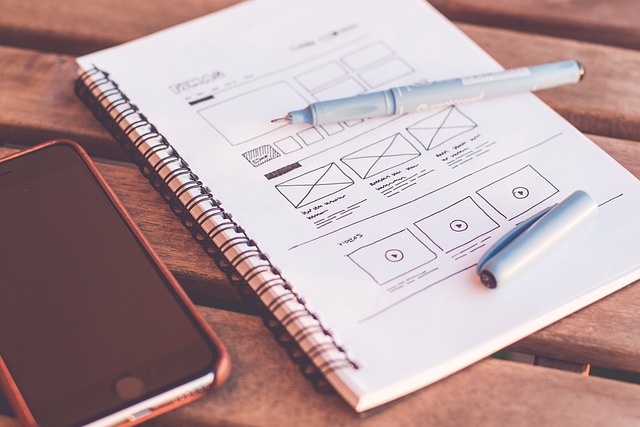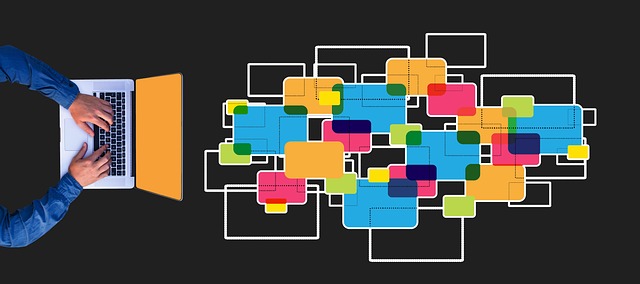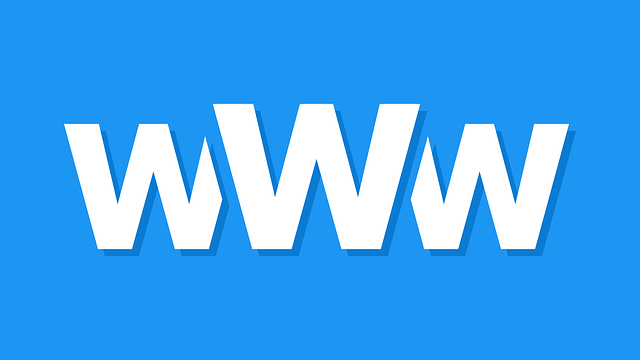“Unleash your brand’s potential with tailored solutions through custom web design. In today’s digital landscape, a unique online presence is key. This comprehensive guide explores the art of creating bespoke websites that captivate users and drive business growth.
From defining your needs to measuring success, we’ll navigate you through every step. Discover the power of custom web design as we uncover trends, best practices, and real-world case studies. Empower yourself with knowledge and transform your digital vision into reality.”
Understanding Custom Web Design: Definition and Benefits

Custom web design is a specialized approach that involves creating unique, tailored websites specifically for individual businesses or organizations. It goes beyond standard templates and off-the-shelf solutions to deliver a digital presence that perfectly aligns with a client’s brand identity, goals, and target audience. By embracing custom web design, businesses can expect enhanced user experiences, improved branding consistency, and increased functionality tailored to their specific needs.
The benefits of custom web design are multifaceted. It allows for the creation of visually appealing, user-friendly interfaces that captivate visitors and encourage engagement. Customization enables businesses to implement unique features and functionalities that set them apart from competitors, fostering a stronger connection with their audience. Moreover, a custom website can significantly boost search engine optimization (SEO) efforts by incorporating tailored strategies that target specific keywords and content, ultimately driving more relevant traffic to the site.
The Process of Creating a Custom Website

Creating a custom website is a collaborative process that begins with understanding your unique business needs and goals. Web designers work closely with clients to gather requirements, discuss branding and style preferences, and outline key features required for an effective online presence. This involves several crucial steps. Firstly, designers conduct thorough research to grasp the target audience and industry standards. Then, they create wireframes and mockups, visual representations that lay out the site’s structure and design elements.
Once approved, developers bring the website to life using specialized coding languages. They integrate chosen features, ensure responsiveness across devices, and optimize for search engines. The result is a dynamic, visually appealing, and user-friendly online platform tailored to enhance your brand visibility and engagement. Throughout this process, regular communication ensures the final product aligns with expectations and delivers on the promise of a successful custom web design.
Key Elements of an Effective Custom Web Design

A successful custom web design goes beyond aesthetics; it’s a strategic blend of user experience, functionality, and visual appeal tailored to specific business needs. Core elements include a clear call-to-action (CTA) that guides users towards desired outcomes, whether making a purchase or contacting the company. Responsive design is paramount, ensuring seamless browsing across all devices, from desktops to smartphones. Fast loading times, easy navigation, and intuitive information architecture further enhance user engagement.
Furthermore, incorporating branding elements consistently throughout the site reinforces brand identity while leveraging compelling visuals, high-quality content, and optimized search functionality drives conversions. A custom web design should also prioritize security measures like SSL certificates to protect sensitive data, building trust with visitors. Ultimately, an effective design tells your brand’s story in a way that resonates with your target audience, fostering connections and driving business growth.
Choosing the Right Custom Web Design Agency

When it comes to selecting a custom web design agency, it’s crucial to find a partner that aligns with your brand’s vision and goals. Not all agencies are created equal, so take the time to research and evaluate their portfolio, expertise, and client testimonials. Look for a team that specializes in creating tailored solutions rather than using templates, ensuring your website is unique and optimized for user experience.
Consider their communication methods and project management approach. Effective collaboration is key to a successful partnership. Choose an agency that offers transparent updates, listens to your feedback, and adapts to your evolving needs. With the right custom web design agency by your side, you’ll have a powerful online presence that captivates your audience and drives business growth.
Latest Trends Shaping Custom Web Design in 2023

In 2023, the landscape of custom web design is being reshaped by several compelling trends that prioritize user experience and visual aesthetics. One notable trend is the increasing adoption of responsive design, ensuring websites seamlessly adapt to various devices and screen sizes, from desktops to smartphones. This shift is driven by the growing importance of mobile accessibility and Google’s favoritism towards mobile-friendly sites in search rankings.
Additionally, minimalism and clean designs are gaining traction, with a focus on uncluttered layouts and intuitive navigation. This trend emphasizes simplicity as a design principle, making websites more user-friendly and visually appealing. The integration of interactive elements, such as animations and micro-interactions, also enhances user engagement, creating dynamic and immersive experiences that cater to modern web users’ expectations.
Measuring Success: KPIs for Custom Web Design Projects

Measuring success in custom web design projects is crucial for gauging the impact and effectiveness of the design solutions implemented. Key Performance Indicators (KPIs) serve as benchmarks to evaluate how well the website aligns with its business objectives. For e-commerce sites, KPIs such as conversion rates, average order value, and cart abandonment rate provide insights into customer engagement and sales performance. Tracking these metrics helps in identifying areas for improvement and optimizing the user experience to drive better business outcomes.
In non-e-commerce websites, success might be defined by different KPIs like page views, bounce rates, and time spent on site. These indicators help assess how well the website is fulfilling its informational or interactive goals. By regularly monitoring these KPIs, web design teams can make data-driven decisions to enhance user satisfaction, improve search engine rankings, and ultimately, achieve the desired business outcomes through custom web design solutions.
Common Mistakes to Avoid in Custom Web Development

When embarking on a custom web design journey, it’s crucial to steer clear of several common pitfalls that can hinder your online presence. One blunder many businesses make is failing to define their goals and target audience clearly. A website is a powerful tool, but without a well-defined purpose and understanding of the intended users, it may fall short of its potential. This often leads to designs that don’t resonate with the desired demographic, resulting in low engagement and conversions.
Another mistake to avoid is neglecting the importance of user experience (UX). A seamless, intuitive navigation structure and responsive design are vital for keeping visitors engaged. Ignoring mobile optimization can be detrimental, as a significant portion of internet users access websites solely through their smartphones. Additionally, not investing in regular updates and maintenance can make your site appear outdated and unprofessional, losing potential clients to competitors with more up-to-date offerings.
Case Studies: Successful Custom Web Design Implementations

Custom web design case studies provide a powerful tool for understanding the impact and success of tailored digital solutions. By examining real-world implementations, businesses can gain valuable insights into how custom web design can transform their online presence. These studies showcase the diverse range of industries and challenges that custom web design successfully addresses. From e-commerce platforms optimized for user experience to corporate websites enhancing brand identity, each case study highlights unique requirements and innovative design strategies.
Through these implementations, it becomes evident that a well-crafted custom web design goes beyond aesthetics. It involves a deep understanding of target audiences, business goals, and competitive landscapes. Successful cases demonstrate how designers and developers collaborate to create not just visually appealing websites but also highly functional, user-friendly, and search engine optimized platforms. This holistic approach ensures that custom web design solutions deliver measurable results, driving business growth and solidifying online presence.
Future of Custom Web Design: Predictions and Innovations

The future of custom web design is brimming with innovation and exciting possibilities, driven by advancements in technology and evolving user expectations. As we move further into the digital age, websites are no longer static entities but dynamic platforms that need to adapt and engage users across various devices and platforms. Custom web design solutions will continue to play a pivotal role in creating unique, interactive, and visually appealing online experiences.
Predictions include a greater emphasis on user experience (UX) optimization, with designers focusing on intuitive navigation, seamless integration of multimedia elements, and personalized content delivery. Voice search optimization, augmented reality (AR) interactions, and responsive design that caters to diverse screen sizes will become standard practices. Additionally, the use of artificial intelligence (AI) and machine learning algorithms could revolutionize custom web design by enabling dynamic content generation, intelligent user behavior prediction, and automated personalization at scale.
